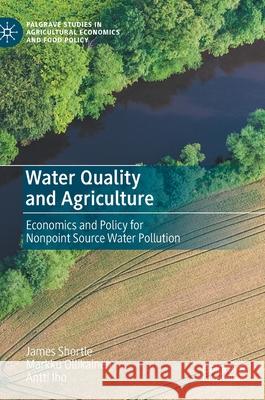Water Quality and Agriculture: Economics and Policy for Nonpoint Source Water Pollution » książka
topmenu
Water Quality and Agriculture: Economics and Policy for Nonpoint Source Water Pollution
ISBN-13: 9783030470869 / Angielski / Twarda / 2021 / 396 str.
Kategorie:
Kategorie BISAC:
Wydawca:
Palgrave MacMillan
Seria wydawnicza:
Język:
Angielski
ISBN-13:
9783030470869
Rok wydania:
2021
Wydanie:
2021
Numer serii:
000773360
Ilość stron:
396
Waga:
0.65 kg
Wymiary:
21.01 x 14.81 x 2.39
Oprawa:
Twarda
Wolumenów:
01
Dodatkowe informacje:
Wydanie ilustrowane











